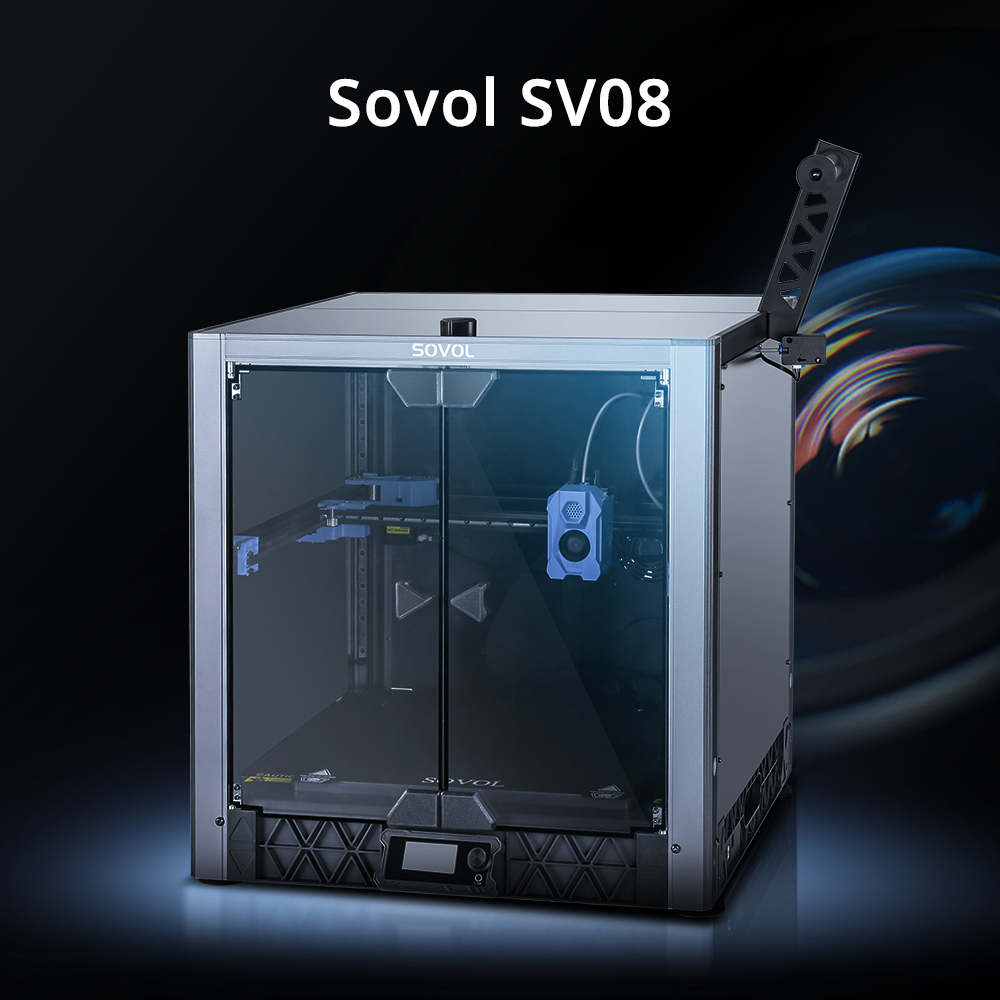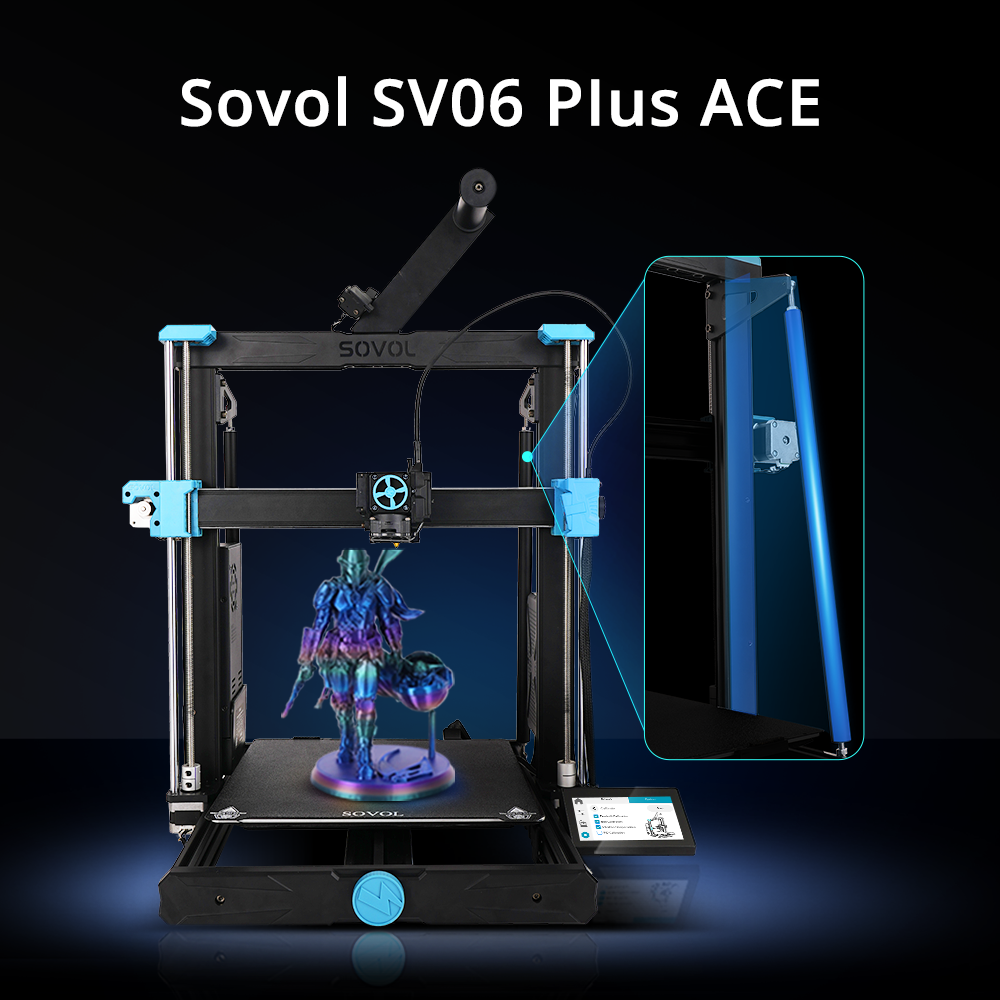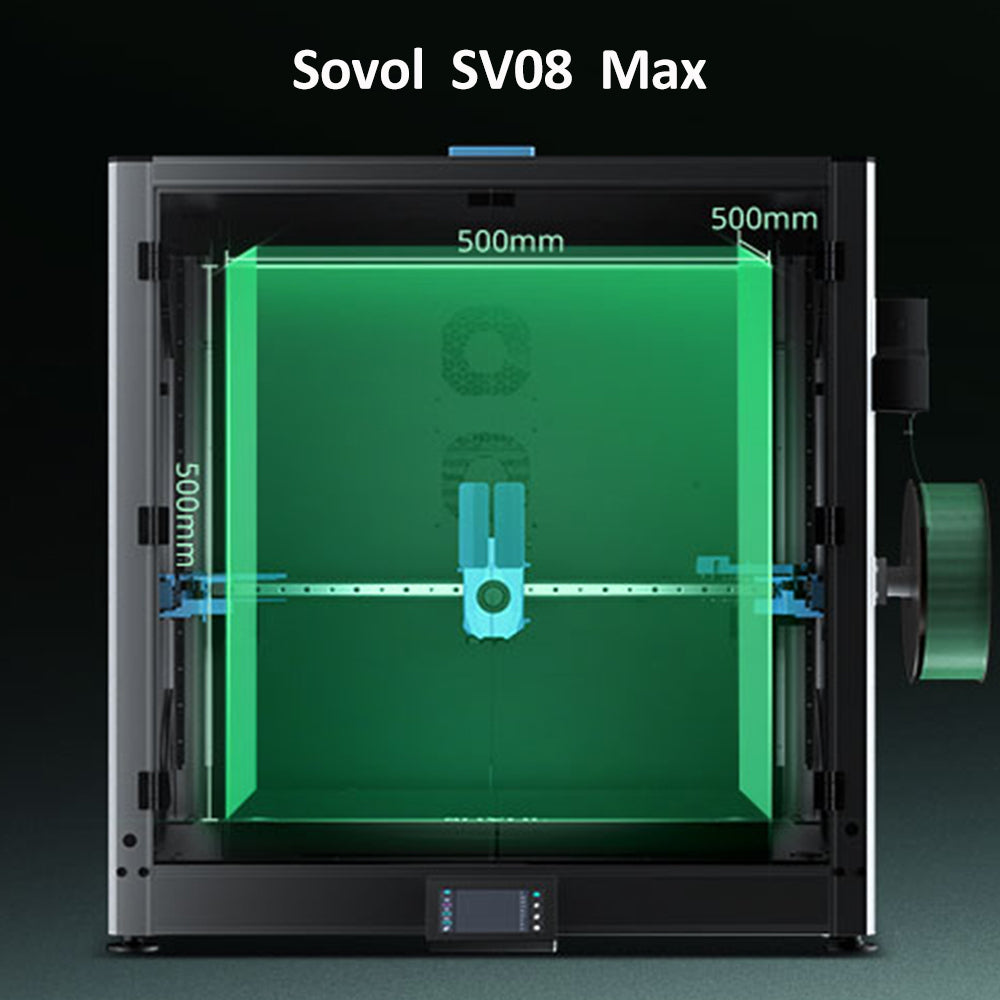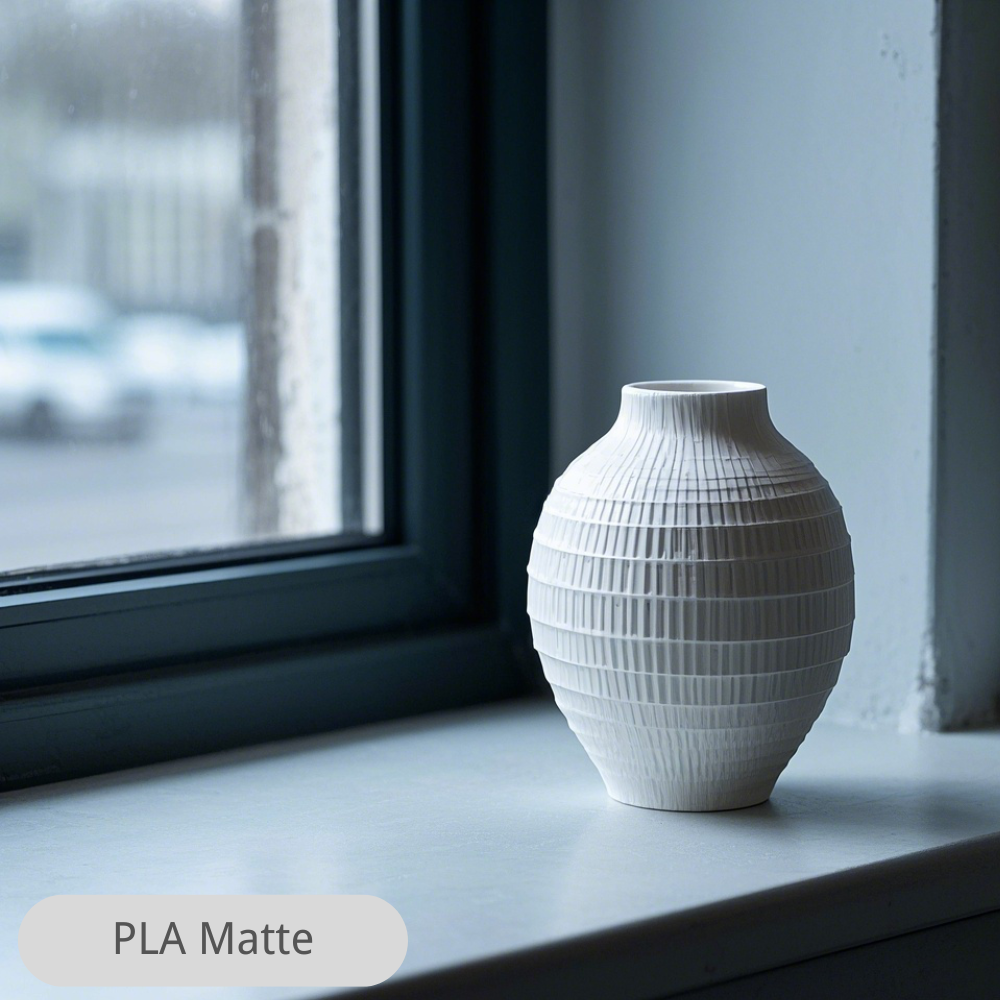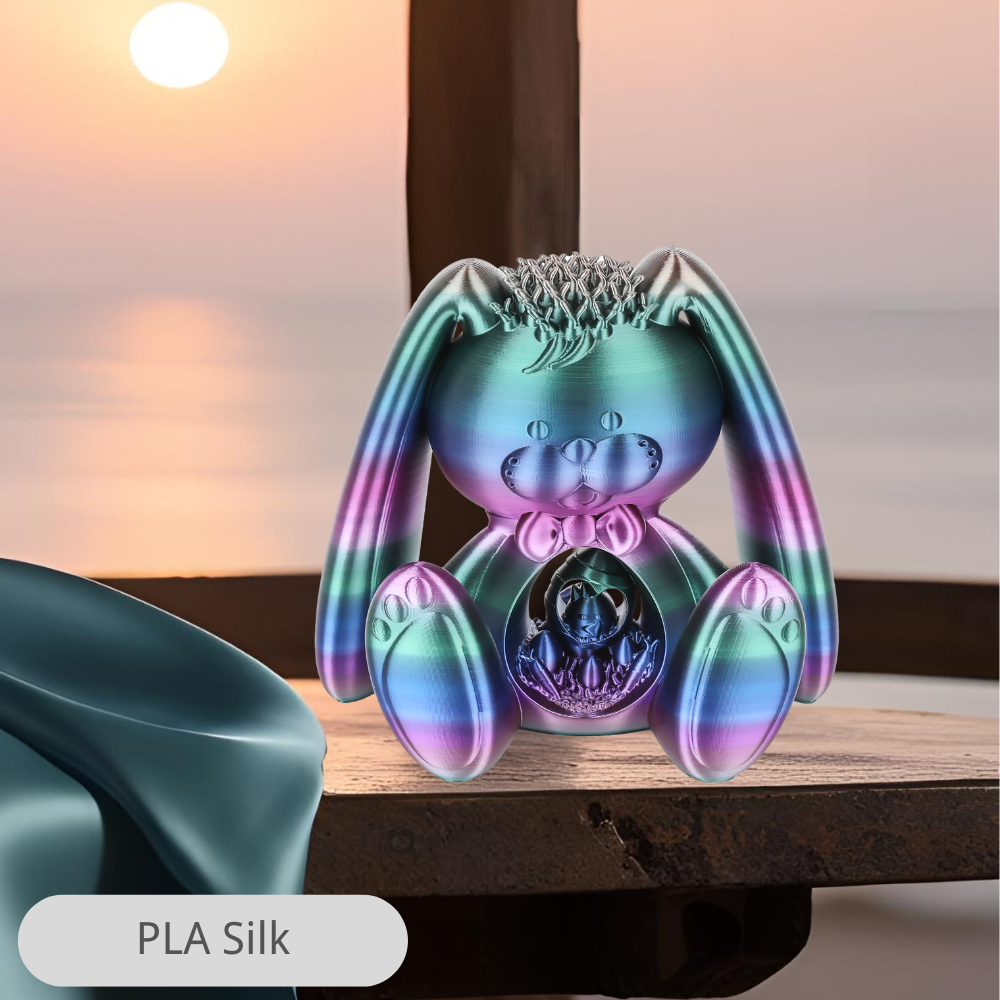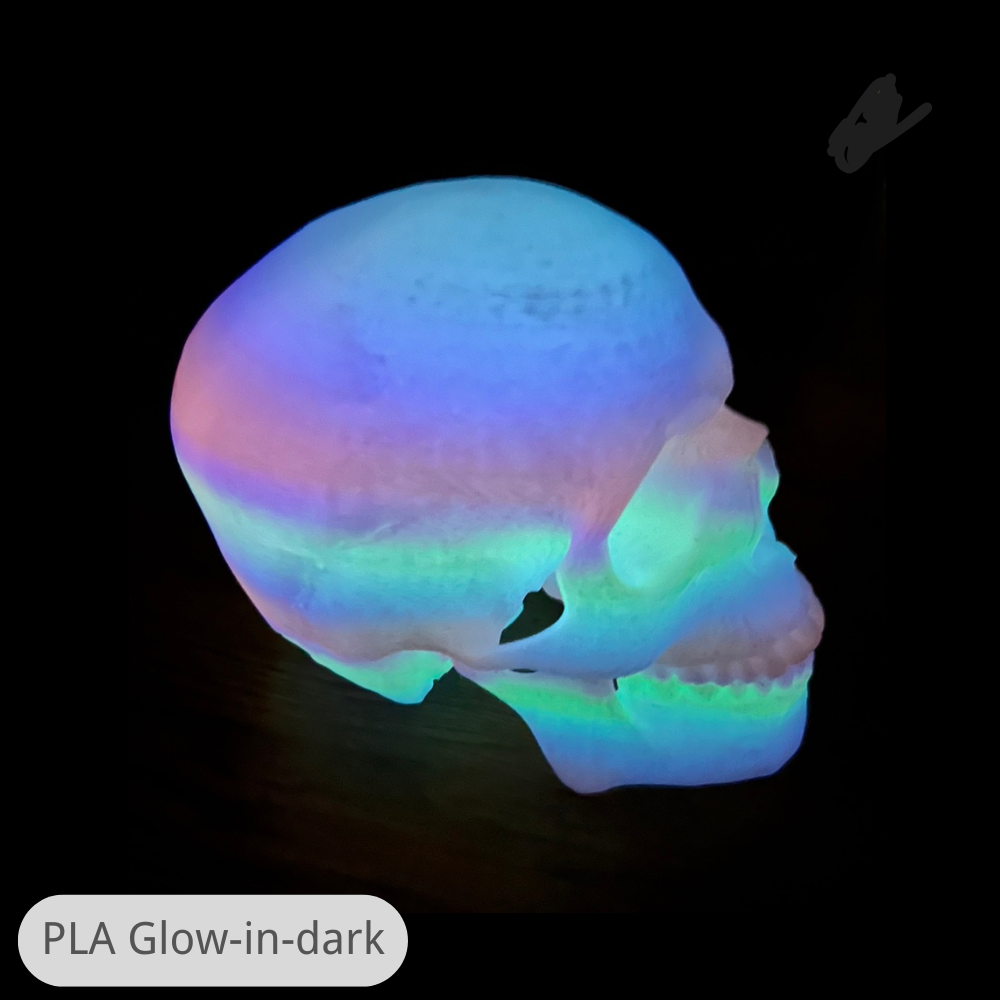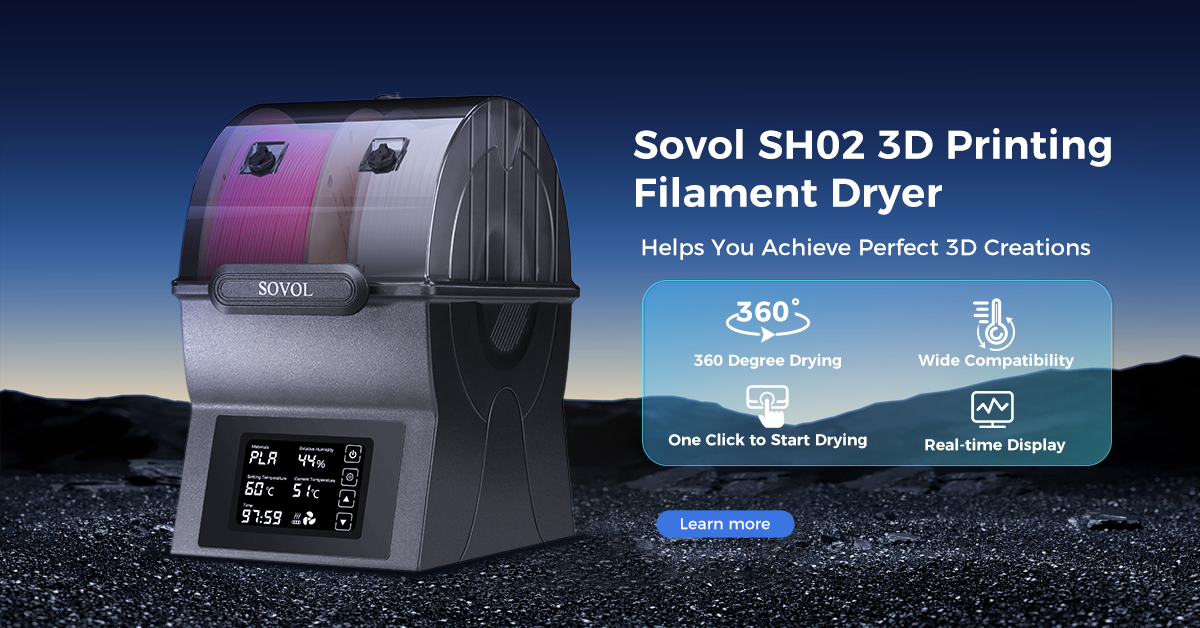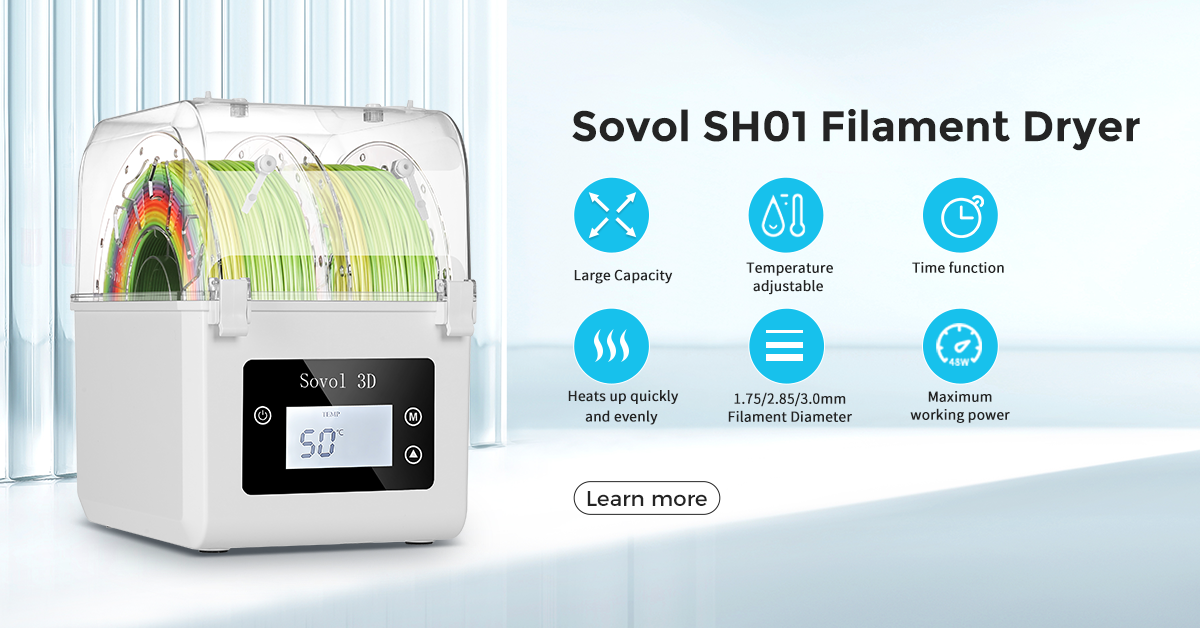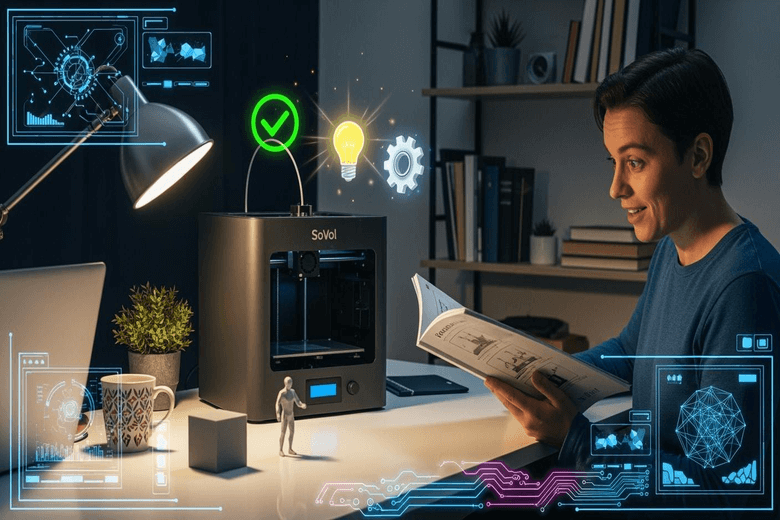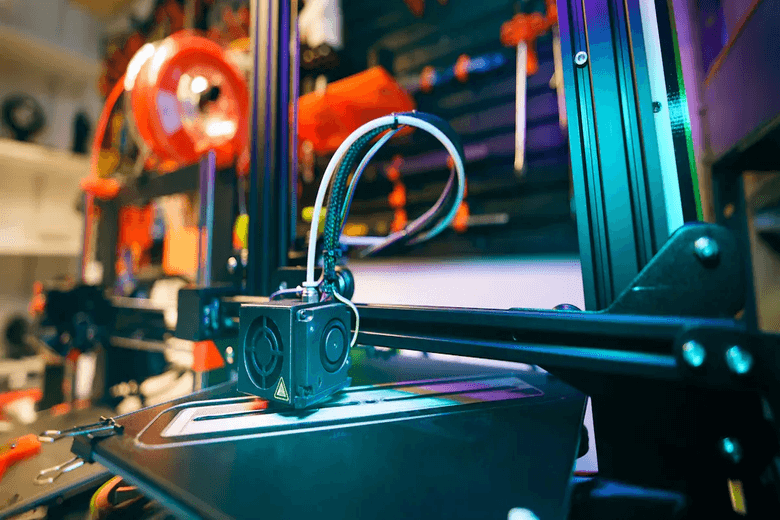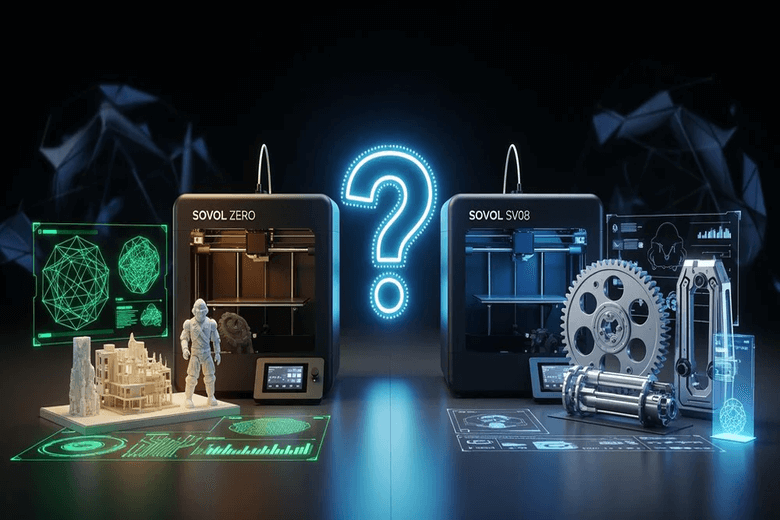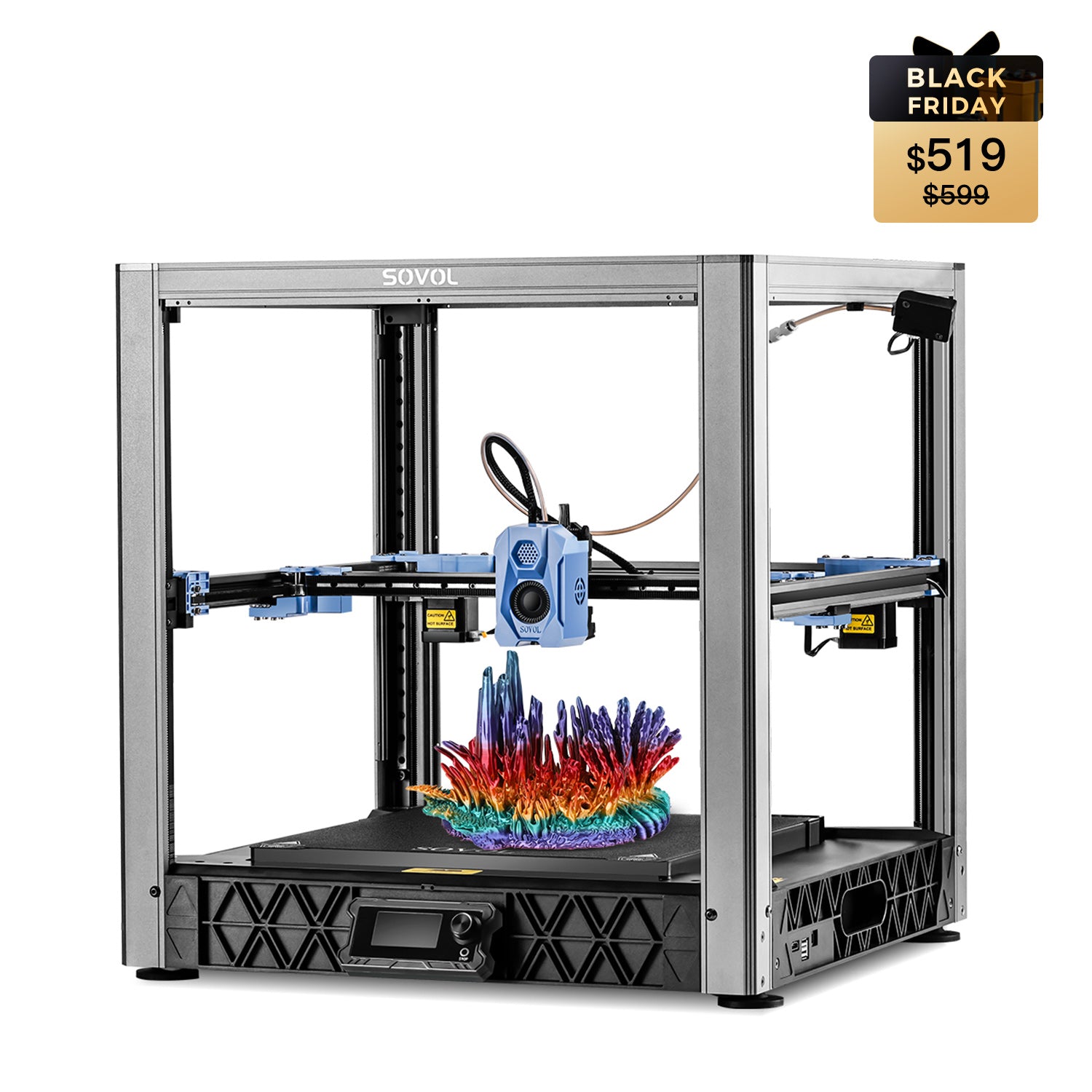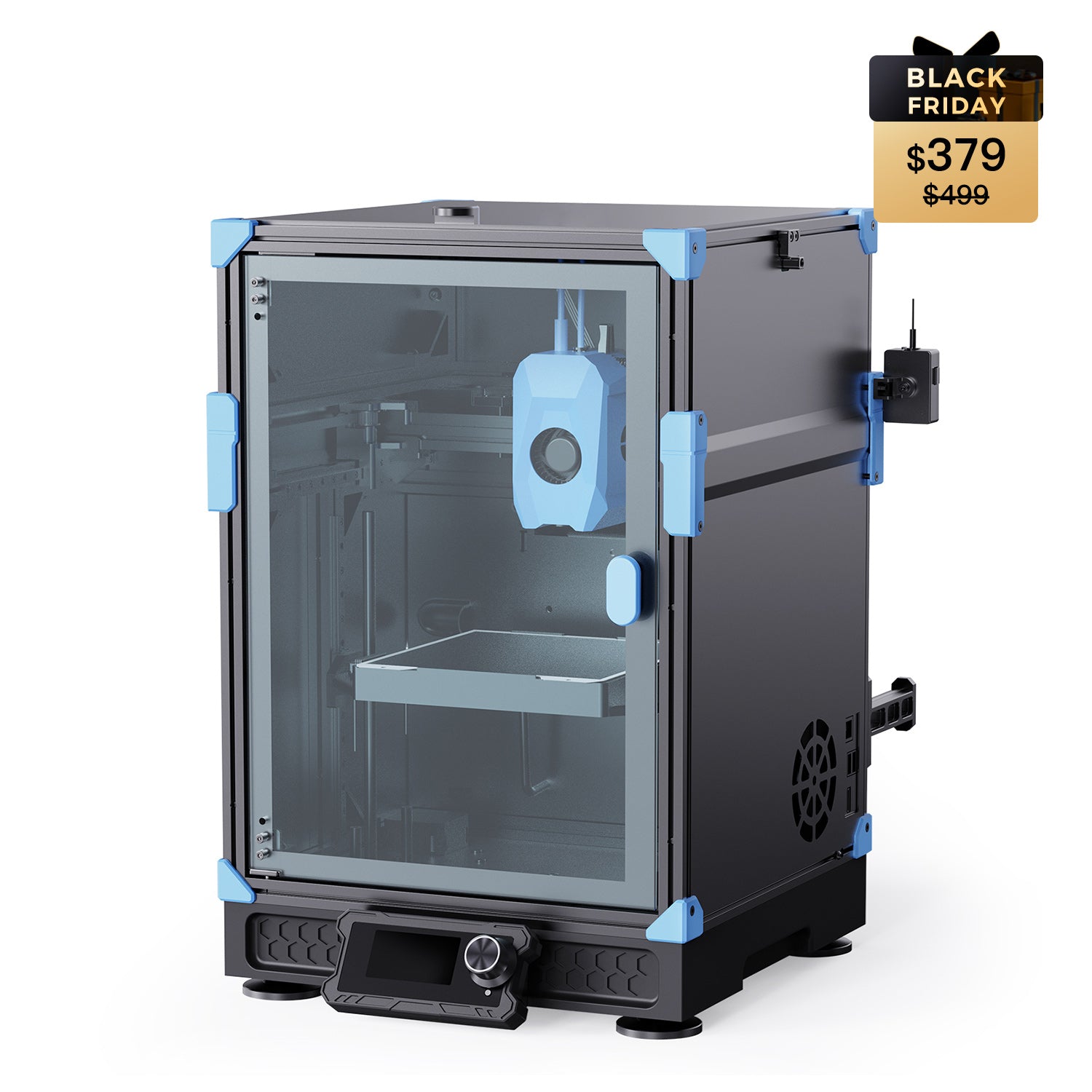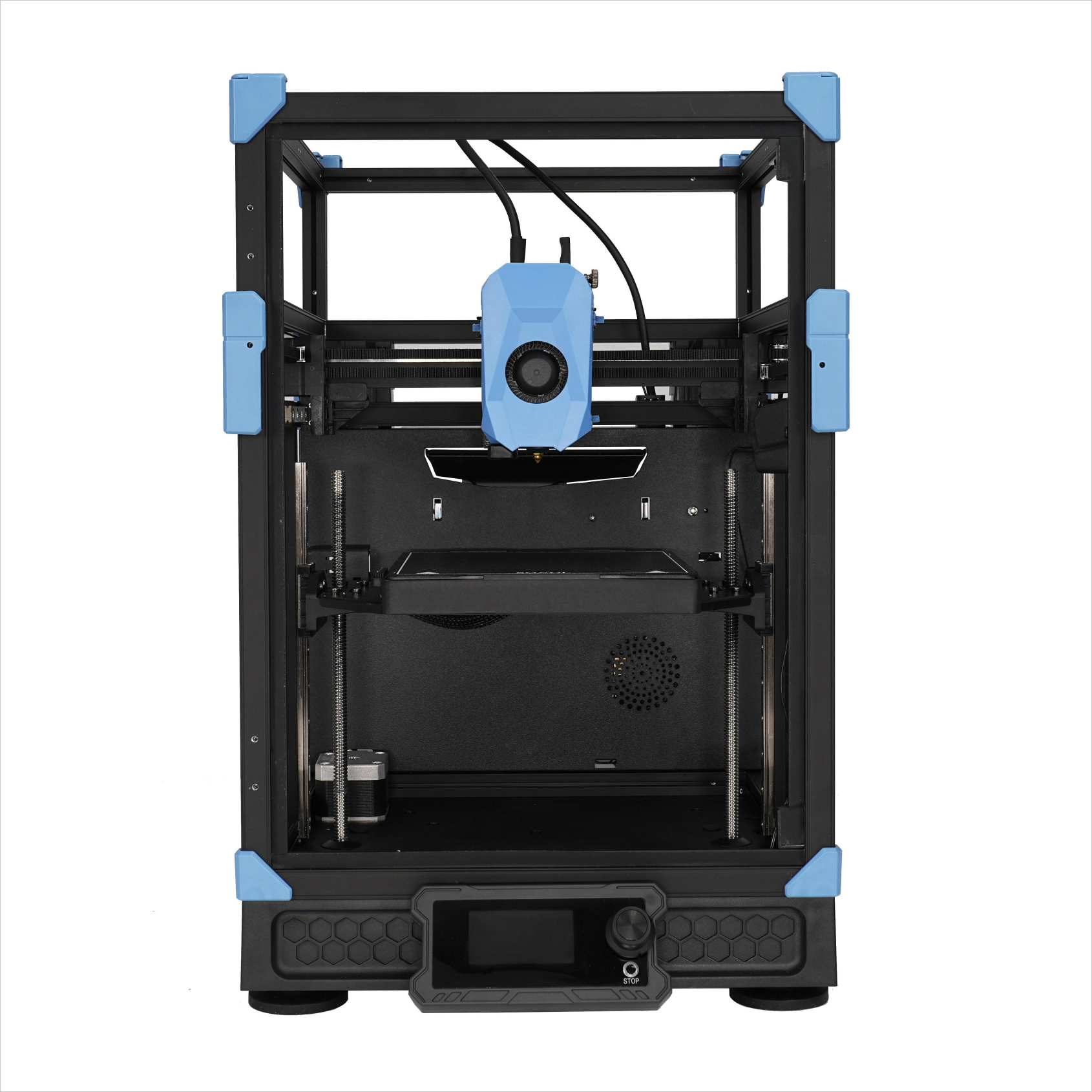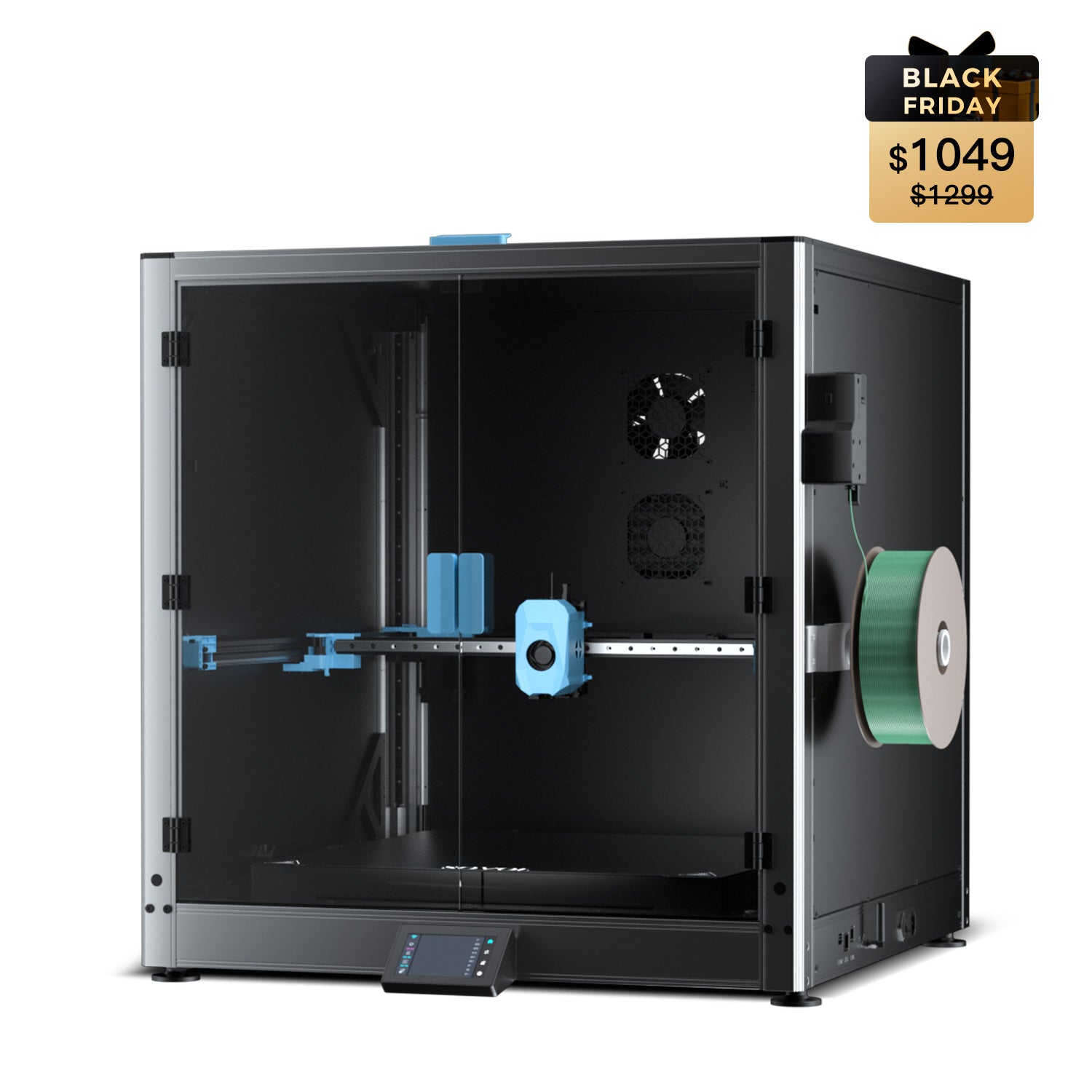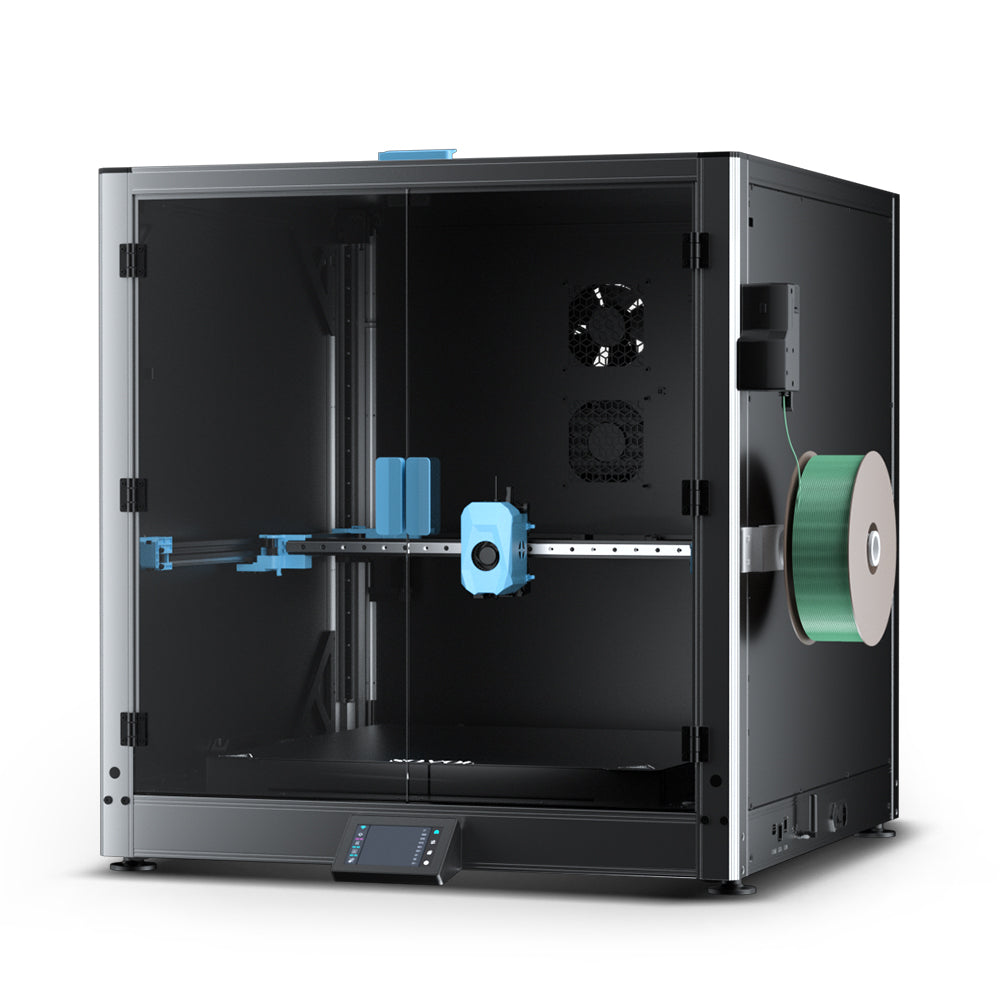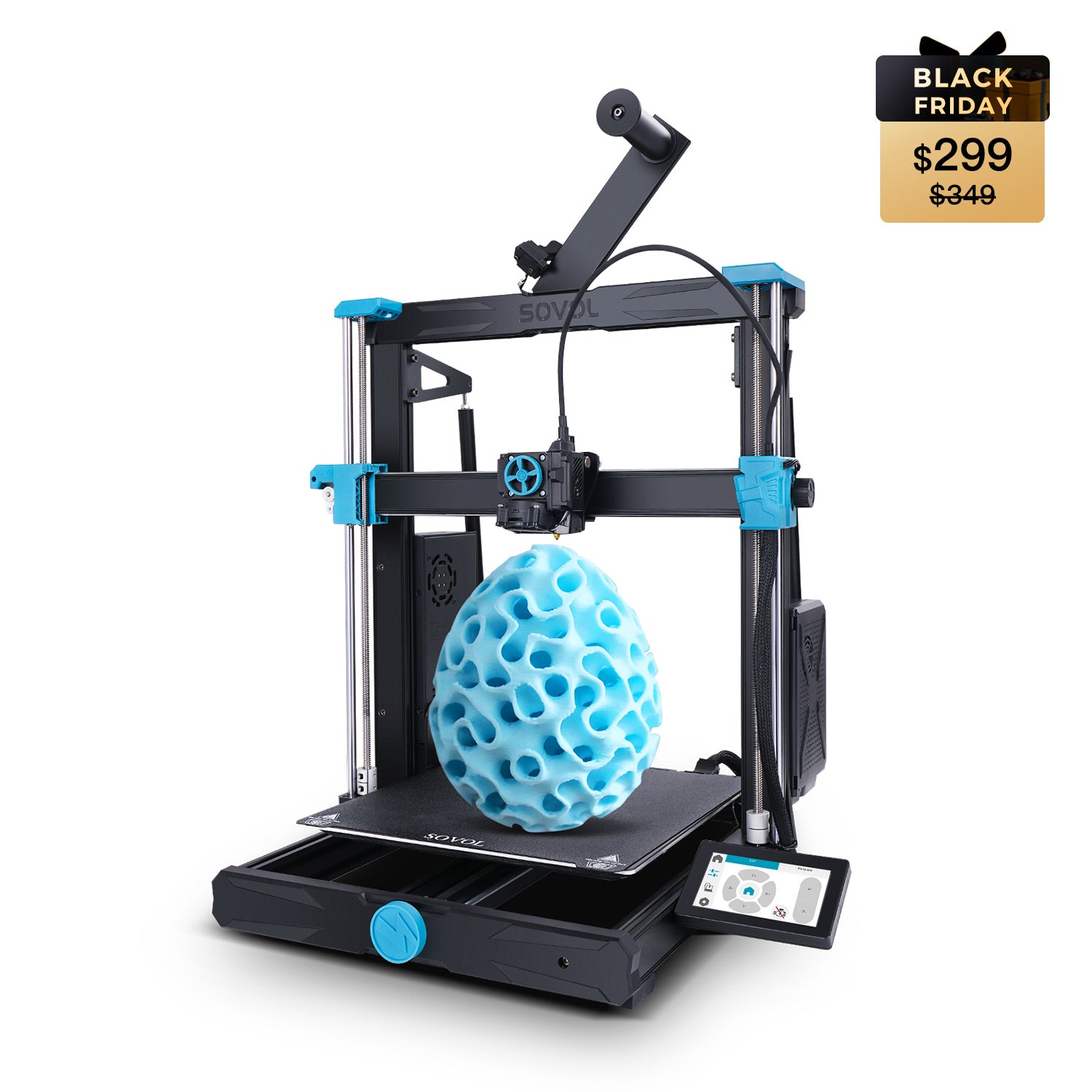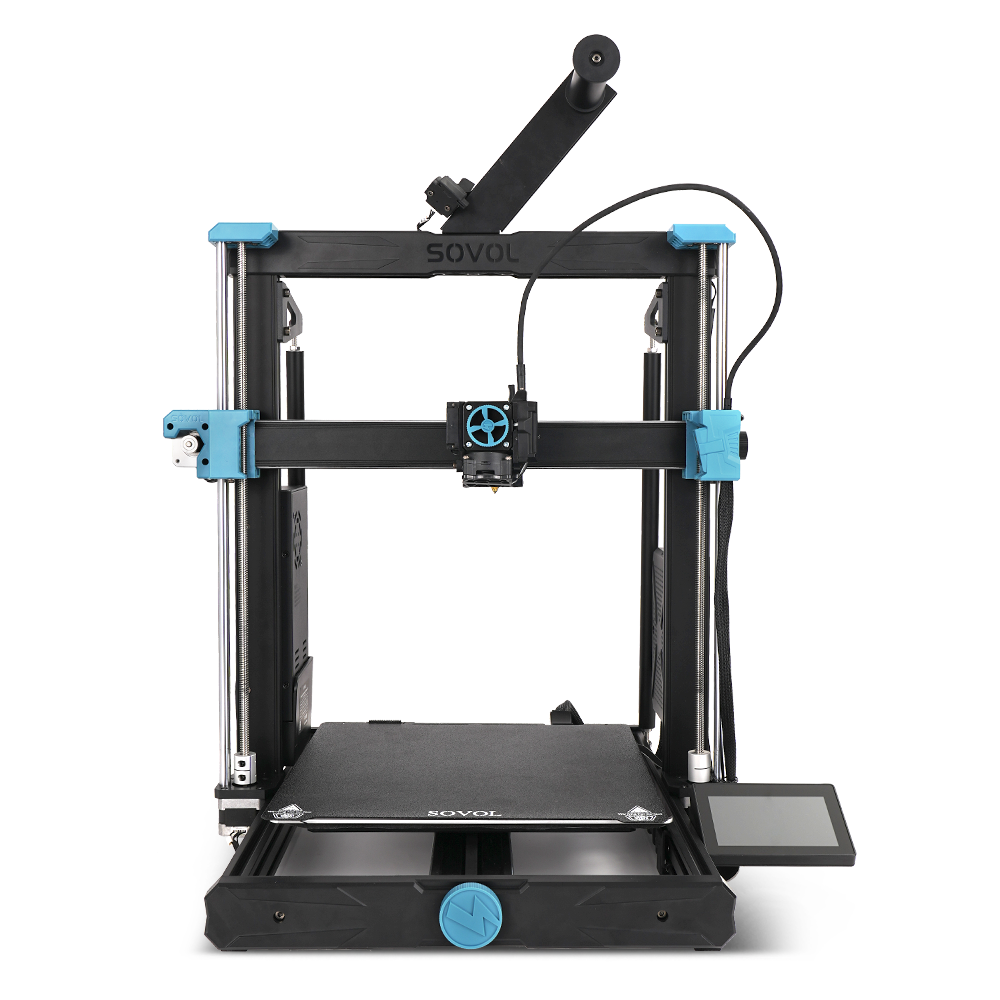You want your Sovol SV08 Max to make great 3d prints every time. This 3d printer has cool features that help it print fast and well. Look at these numbers:
|
Feature/Metric |
Value/Description |
|---|---|
|
Positional Accuracy |
≤0.02 mm |
|
Maximum Print Speed |
Up to 700 mm/s |
|
Ringing Artifact Reduction |
92% |
With 3d printing technology like CoreXY motion and smart feeders, you can do hard 3d projects easily. Many people get good, steady results, even on long prints. Try new settings and share your Sovol SV08 Max tips below!
Key Takeaways
- Use the Sovol SV08 Max’s smart features like CoreXY, auto-bed leveling, and smart feeder. These help you get fast, accurate, and smooth 3D prints every time.
- Always run auto-bed leveling before you print. This makes sure the bed is flat and the first layer is perfect. It helps you avoid failed prints.
- Keep filament in a dry place. Check your nozzle before you print. This stops clogs and makes your prints better.
- Start with the recommended settings. Use a 0.2 mm layer height and a print speed of 40-60 mm/s. This gives you a good mix of detail and speed.
- Join the Sovol SV08 Max community online. You can share tips, get help, and find print profiles for your projects.
Sovol SV08 Max Features
The Sovol SV08 Max stands out because of its smart features. These features help you get better print quality, more precision, and a smoother printing experience. Whether you are new to 3D printing or already have experience, you will notice how these features make your prints look great and your printer easier to use.
|
Feature |
What It Does for You |
|---|---|
|
CoreXY System |
Prints fast and smooth, keeps high precision, and reduces ringing artifacts |
|
Auto-Bed Leveling |
Levels the bed in 80 seconds for a perfect first layer every time |
|
Smart Feeder System |
Watches filament flow, stops tangles and clogs, and keeps your print running |
CoreXY System
You want speed and precision in every print. The Sovol SV08 Max uses a CoreXY system that gives you both. This system lets your printer reach speeds up to 700 mm/s. You get high accuracy and smooth movement, even at fast speeds. During tests, the printer kept a positional deviation of only 0.02 mm. That means your models come out clean and sharp. You also see a 92% drop in ringing artifacts, so your prints look professional. The CoreXY system helps you handle large build volume projects with ease.
Auto-Bed Leveling
Getting the first layer right is key to print quality. The Sovol SV08 Max has an auto-leveling system that uses eddy current scanning. This auto-leveling system finishes in just 80 seconds. You do not have to guess or adjust the bed by hand. The auto-leveling system gives you a flat surface, so every print starts with perfect precision. You save time and avoid failed prints. Both beginners and advanced users love this feature because it makes setup simple and boosts print quality.
Smart Feeder System
Filament jams can ruin your build. The Sovol SV08 Max solves this with its smart feeder system. This system checks the filament flow all the time. If it finds a problem, it stops the printer before a clog happens. You get fewer interruptions and more reliable prints. The smart feeder system works well for long prints and big projects. You can trust your printer to finish the job, even with a large build volume.
Tip: These features work together to give you high precision, great quality, and a smooth printing process. Try them out and see how much easier your 3D printing can be!
3D Printer Setup
Getting your Sovol SV08 Max ready for a print is just as important as the printing itself. A good setup means fewer problems and better results. Let’s walk through the steps you should follow every time you use your 3d printer.
Bed Leveling
A flat bed is the secret to a perfect first layer. The Sovol SV08 Max makes this easy with its auto-leveling feature. You can use the touchscreen to start auto-leveling. Just tap the menu, select "Level," and let the 3d printer do the work. The auto-leveling system scans the bed in about 80 seconds. You do not need to adjust screws or guess if the bed is flat.
Tip: Always run auto-leveling before a big print or when you change the bed surface. This step helps your 3d printer lay down the first layer smoothly and keeps your prints from peeling up at the corners.
Nozzle Check
Before you start printing, check the nozzle. A clean nozzle means smooth extrusion and fewer clogs. Look for any leftover filament or burnt bits. If you see anything, heat the nozzle and use a soft brush or cleaning needle to clear it out. Skilled users who clean their nozzles often can print over 100 models with a ruby nozzle. If you skip this step, you might only get five prints before problems start.
A quick nozzle check can save you from failed prints and wasted filament. You want your Sovol SV08 Max to work at its best every time.
Homing Axes
Homing the axes tells your 3d printer where everything is. Use the touchscreen controls to home all axes before each print. Tap "Home" on the display. The printer will move the bed and nozzle to their starting points. This step makes sure your Sovol SV08 Max knows exactly where to start printing.
If you skip homing, your 3d printer might print in the wrong spot or crash into the bed. Homing is a simple step, but it keeps your prints safe and accurate.
Here’s a quick table with expert-recommended calibration steps and settings for your Sovol SV08 Max:
|
Step |
Why It Matters |
How To Do It / Setting |
|---|---|---|
|
Home All Axes |
Correct positioning |
Use touchscreen "Home" |
|
Level Print Bed |
First layer adhesion |
Use auto-leveling |
|
PID Calibration |
Stable temperature |
Run from printer menu |
|
Extruder Calibration |
Accurate filament flow |
Use calibration routine |
|
First Layer Z Height |
Best first layer quality |
Adjust in setup menu |
|
Infill Pattern |
Strength and stability |
Set to "Lines" in slicer |
|
Extrusion Temp |
Layer bonding |
|
|
Print Speed |
Prevent missed steps |
25 mm/s |
|
Layer Thickness |
Detail and speed balance |
0.29 mm |
Cleaning
A clean 3d printer is a happy printer. Dust, old filament, and debris can cause clogs or jams. Wipe down the bed and rails with a soft cloth. Check the extruder and feeder for any stuck bits. Regular cleaning and inspection help you spot small issues before they turn into big problems.
- Skilled users who clean their Sovol SV08 Max often see fewer failures and longer part life.
- Regular cleaning can drop your print failure rate by 20%.
- Early fixes save you time and money.
Note: Always check the bed surface before every print. A clean bed helps your 3d printer stick the first layer and keeps your prints looking sharp.
You want your Sovol SV08 Max to last a long time and give you great 3d prints. Make cleaning and inspection part of your routine. Your 3d printer will thank you with better prints and fewer headaches.
Printing Preparation
Getting ready before you start a print can make a big difference. You want your Sovol SV08 Max to give you the best results every time. Let’s look at some easy steps you can follow.
Filament Storage
Filament can pick up moisture from the air. Wet filament can ruin your build. You should always store your filament in a dry box or sealed bag with silica gel. This keeps it dry and ready for your next project. If you leave filament out, it can get brittle or cause bubbles in your print.
Tip: Label each spool with the date you opened it. This helps you track how long it has been out.
Filament Drying
Sometimes, filament gets wet even if you store it well. You can use a filament dryer or a food dehydrator to dry it out. Dry filament gives you a smoother build and fewer print problems. If you hear popping sounds or see steam during printing, your filament needs drying.
- PLA: Dry at 45°C for 4 hours
- PETG: Dry at 65°C for 6 hours
- ABS: Dry at 80°C for 6 hours
Writing Down Settings
Every filament brand can need different printer settings. Write down the best temperature, speed, and fan settings for each type. Keep a notebook or use your phone. This makes it easy to repeat a great build later. You will save time and avoid mistakes.
|
Filament Type |
Nozzle Temp |
Bed Temp |
Notes |
|---|---|---|---|
|
PLA |
200°C |
60°C |
Good for fast build |
|
PETG |
240°C |
75°C |
Needs slow speed |
Test Prints
Before you start a big build, run a small test print. This checks if your extrusion rate and settings work well. You can spot problems early and fix them before wasting time or filament. Try a simple cube or a calibration model. If the test looks good, you are ready for your main build.
Note: Test prints help you catch issues with your Sovol SV08 Max before they ruin your project.
3D Printing Settings
Getting the right printer settings can make your Sovol SV08 Max prints look amazing. You want your 3d models to have sharp details, smooth surfaces, and strong layers. Let’s break down the most important settings you should check before every print.
Layer Height
Layer height controls how thick each layer of your 3d print will be. If you use a smaller layer height, you get more detailed designs and smoother surfaces. A bigger layer height prints faster but may show more lines.
Most users find that a layer height between 0.2 mm and 0.3 mm works best for the Sovol SV08 Max. This range gives you a good balance between speed and quality. If you want super detailed designs, try 0.1 mm, but remember it will take longer.
Tip: For most projects, start with 0.2 mm. You can always adjust for more detail or faster prints later.
Print Speed
Print speed is how fast your printer moves while printing. The Sovol SV08 Max can handle high print speeds because of its CoreXY system. This design keeps the printer stable, even when moving quickly. You can print at 40 to 60 mm/s for most jobs. This speed helps reduce vibration and keeps your 3d prints looking sharp.
If you want to print big models fast, you can try higher speeds. The Sovol SV08 Max stays accurate even at fast speeds, thanks to its strong frame and precise motors. You still get great quality, even when you push the limits.
|
Setting |
Recommended Value |
Why It Matters |
|---|---|---|
|
Layer Height |
Balances speed and detail |
|
|
Print Speed |
40 - 60 mm/s |
Reduces vibration, better quality |
Temperature
Temperature settings are key for good 3d printing. You need to set both the nozzle and the bed to the right temperatures for your filament. For PLA, set the bed between 50°C and 70°C. For ABS, use about 110°C, but do not go over 120°C. The Sovol SV08 Max has a thick aluminum hotbed that heats up fast and evenly. This helps your prints stick well and keeps warping away.
Set your nozzle temperature based on your filament. Most PLA works at 200°C, while PETG needs about 240°C. Always check the filament box for the best range.
Note: If you see your prints not sticking or curling, try raising the bed temperature a little.
Infill
Infill decides how solid your 3d print will be inside. More infill makes your print stronger but uses more filament and takes longer. For most projects, 15% to 25% infill is enough. If you need a strong part, like a tool or a bracket, go higher.
You can pick different infill patterns in your slicer. "Lines" is a good choice for speed and strength. Try other patterns if you want to experiment with customization.
Supports
Supports help your 3d printer build overhangs and tricky shapes. The Sovol SV08 Max handles supports well, so you can print complex models. Turn on supports in your slicer when your model has big overhangs or bridges.
You can choose between "touching buildplate" or "everywhere" for support placement. Remove supports after printing for a clean finish. If you want easy cleanup, lower the support density.
Shells
Shells are the outer walls of your 3d print. More shells make your print stronger and help with surface quality. Most users set shells to 2 or 3 perimeters. This setting gives you a tough outer layer without wasting filament.
If you want extra strength or a smoother finish, add more shells. You can find this option in your printer settings under "walls" or "perimeters."
Pro Tip: Advanced users can adjust the nozzle diameter in the configuration files. A bigger nozzle lets you print faster and lay down more plastic. The Sovol SV08 Max supports high-flow nozzles, so you can finish large prints quickly without losing detail. This customization helps you get the most out of your 3d printer.
Recommended Slicer Settings Table
Here’s a quick table with the top slicer settings for the Sovol SV08 Max:
|
Parameter |
Recommended Value |
Purpose |
|---|---|---|
|
Layer Height |
0.2 - 0.3 mm |
Balances print speed and detail |
|
Print Speed |
40 - 60 mm/s |
Reduces vibration, improves quality |
|
Extrusion Multiplier |
1.0 |
Ensures correct filament flow |
|
Bed Adhesion |
Brim or Raft |
Improves first layer adhesion |
|
Nozzle Height |
0.1 - 0.2 mm |
Helps with proper filament spreading |
|
Bed Temp (PLA) |
50 - 70°C |
Good for most PLA prints |
|
Bed Temp (ABS) |
110°C |
Prevents warping with ABS |
You can use these settings as a starting point. Try small changes to see what works best for your 3d projects. The Sovol SV08 Max gives you lots of room for customization, so you can always tweak your printer for better results.
Remember: Good printer settings make your 3d prints look great and last longer. Take notes on what works for you and keep testing new ideas!
Klipper Tips
Klipper firmware can take your Sovol SV08 Max to the next level. You get more control over your 3d prints, faster speeds, and better efficiency. Klipper lets you use a web interface, so you can change settings right from your computer or phone. This makes your 3d printing workflow smoother and helps you get the most out of your printer.
Here’s a quick look at what Klipper can do for your 3d projects:
|
Metric / Feature |
Value / Description |
|---|---|
|
Maximum Print Speed |
Up to 700 mm/s |
|
Maximum Acceleration |
40,000 mm/s² |
|
Positional Accuracy |
≤0.02 mm during fast moves and acceleration tests |
|
Ringing Artifacts Reduction |
92% reduction compared to disabled configurations |
|
Extrusion Rate |
35 mm³/s |
Input Shaping
Input shaping is a smart feature in Klipper. It helps your 3d printer move fast without making wavy lines or “ringing” on your prints. When you use input shaping, you can try high-speed printing and still get sharp details. Your 3d models come out looking clean, even when you push the speed. This means you get reduced print times and better efficiency for every project.
Pressure Advance
Pressure advance is another tool that boosts your 3d printing efficiency. It controls how the filament flows when your printer starts and stops moving. With pressure advance, you get smooth corners and even layers. Your prints look better, and you waste less filament. This feature helps you keep high quality, even on tricky shapes or fast moves.
Macros
Macros in Klipper let you automate tasks and save time. You can set up macros for bed leveling, filament changes, or even custom 3d printing routines. Just tap a button in the web interface, and your Sovol SV08 Max does the rest. Macros make your workflow easier and boost your efficiency. You spend less time on setup and more time enjoying your 3d prints.
Tip: Try Klipper’s web interface to adjust input shaping, pressure advance, and macros. You can test new settings, watch your 3d printer in real time, and make changes on the fly. This gives you more control and helps you get the best results every time.
Printing Process
Getting great results with your Sovol SV08 Max means following a smart printing process. You want every print to start right, run smoothly, and finish strong. Let’s walk through the steps that help you boost efficiency and get the most from your printer.
Pre-Print Checklist
Before you hit “Start,” take a minute to check a few things. This quick list can save you from wasted time and filament:
- Make sure your printer bed is clean and level.
- Check that the nozzle is clear.
- Confirm you have enough filament loaded.
- Double-check your model and slicer settings.
Tip: A pre-print checklist helps you catch small issues before they become big problems. You keep your printing workflow smooth and your efficiency high.
Monitoring First Layer
The first layer is the foundation of your print. Watch your printer closely as it lays down the first lines. Look for even lines and good bed adhesion. If you see gaps or the filament doesn’t stick, pause the printing and adjust the bed or nozzle height.
A strong first layer means fewer failed prints. You set yourself up for success and better efficiency every time.
Mid-Print Adjustments
Sometimes, things change during printing. Maybe the filament starts to tangle or the nozzle gets a bit clogged. Stay nearby for the first few layers, then check in now and then. If you spot a problem, you can pause the printer and fix it right away.
Quick fixes keep your print on track and improve your efficiency. You avoid wasted time and materials.
Automated Scheduling
Want to print while you sleep or work? Use automated scheduling features. Many slicers and printer interfaces let you plan prints for later. You can set your printer to start at a certain time or queue up several jobs.
Automated scheduling boosts your efficiency and helps you get more done with less effort. You make the most of your printer, even when you’re not around.
Note: Smart scheduling and careful monitoring turn your printing process into a reliable, high-efficiency workflow.
Finishing
Support Removal
You just finished a print, and now you see supports all over your model. Removing them can feel tricky, but you can do it with the right tools and a little patience. Start by letting your print cool down. Warm plastic bends and breaks too easily. Use small pliers or tweezers to grab the supports and pull them away. Sometimes, you can snap them off with your fingers. For tight spots, try a craft knife or a small file.
Tip: Move slowly and check your model as you go. Rushing can break small details.
If you want to make support removal easier next time, lower the support density in your slicer settings. You can also use "tree supports" for models with lots of overhangs. These break away more easily.
Surface Smoothing
After you remove the supports, you might see rough spots or small bumps. You can smooth these areas with a few simple tools. Sandpaper works well for most prints. Start with a coarse grit, like 200, and move to a finer grit, like 600. Rub gently in small circles. For hard-to-reach places, use a nail file or a sanding stick.
If you print with ABS, you can try acetone vapor smoothing. This method melts the outer layer and gives your print a shiny finish. Always use acetone in a well-ventilated area and wear gloves.
|
Smoothing Tool |
Best For |
|---|---|
|
Sandpaper |
PLA, PETG, ABS |
|
Nail File |
Small details |
|
Acetone |
ABS only |
Painting
Painting your 3D print makes it look even better. First, clean the model to remove dust. Use a soft brush or a damp cloth. Next, apply a primer spray. This helps the paint stick and hides small flaws. Let the primer dry, then use acrylic paints for color. You can use a brush for details or spray paint for large areas.
Note: Thin layers of paint look better than thick ones. Let each layer dry before adding more.
You can finish your model with a clear coat for extra shine and protection. Now your Sovol SV08 Max print looks amazing and ready to show off!
Troubleshooting
Even with a great 3d printer like the Sovol SV08 Max, you might run into problems. Don’t worry! You can fix most issues with a few simple steps. Let’s look at some common 3d printing problems and how you can solve them.
Warping
Warping happens when the corners of your 3d print lift off the bed. This can ruin your model. To stop warping, make sure your bed is clean and level. Use a brim or raft in your slicer settings. Try raising the bed temperature a little. If you print with ABS, keep the room warm and avoid drafts.
Tip: A glue stick or special 3d printing adhesive can help your prints stick better.
Clogs
A clogged nozzle can stop your 3d printing fast. You might see gaps in your print or no filament coming out. Always check your nozzle before you start. If you get a clog, heat the nozzle and use a cleaning needle. Store your filament dry to keep dust and moisture away.
Layer Shifts
Layer shifts make your 3d prints look crooked. This happens when the printer loses its place. Check that your belts are tight and the bed moves smoothly. Make sure nothing bumps the printer during printing. If you see a shift, pause the print and fix the problem before starting again.
Adhesion
Good adhesion keeps your 3d print stuck to the bed. If your print pops off, clean the bed and try a different surface, like PEI or glass. Lower the first layer speed in your slicer. You can also use a brim for extra grip.
|
Problem |
Quick Fixes |
|---|---|
|
Warping |
Use brim, raise bed temp |
|
Clogs |
Clean nozzle, dry filament |
|
Layer Shifts |
Tighten belts, check movement |
|
Adhesion |
Clean bed, use brim or glue stick |
Remember: Most 3d printing problems have easy fixes. Stay calm and try these tips!
Advanced 3D Printing Tips
Maintenance
You want your Sovol SV08 Max to work well for a long time. Taking care of it helps you avoid problems and keeps it running right. Wipe dust and dirt off the rails and bed often. Make sure bolts, belts, and bearings are tight so nothing shakes loose. Change out old nozzles and belts before they break. Put oil on moving parts to help them slide better. Update your firmware every few months for new tools and bug fixes. Write down all your maintenance and part swaps in a notebook or on your phone. This helps you notice patterns and fix things early.
A process control board helps you watch how your Sovol SV08 Max is doing over time. You can find small problems before they get worse. Using good filament means fewer jams and better prints. Learning how to use your printer helps you get the best results. If you do these things, your 3d printer will be ready for any project.
Upgrades
You can make your Sovol SV08 Max even better with upgrades. People in the community share ideas for things like stepper drivers, sensors, and cooling fans. These upgrades help your printer work better and make nicer prints. Try a new fan for smoother layers or add a filament sensor to stop failed prints. After each upgrade, print a test model and adjust your settings. Updating your firmware gives you new features and keeps your printer current.
Check out this table for upgrade ideas and what they do:
|
Upgrade Type |
Benefit |
|---|---|
|
Stepper Drivers |
Quieter, smoother motion |
|
Cooling System |
Better surface finish on cosplay props |
|
Filament Sensor |
Stops prints if filament runs out |
|
Firmware Updates |
New features and bug fixes |
Upgrades let you change your printer to fit your needs. You can make detailed models, cosplay props, or big prototypes with more confidence.
Prototyping
The Sovol SV08 Max is great for making prototypes. You can try out ideas fast and see what works before making the final version. The big build space lets you print large cosplay props or many test models at once. Your prints look and feel like real products. Many people use the Sovol SV08 Max for cosplay because it handles tricky shapes and small details. You can print armor, helmets, and other props that fit just right.
With good settings, you can make seven or more prototypes in one week. This helps you test new ideas and make your designs better quickly. The Sovol SV08 Max has the features you need for flexible designs and custom projects. Whether you make cosplay props or test inventions, this 3d printer helps you reach your goals.
Community and Resources
Forums
You do not have to figure out everything alone. Many Sovol SV08 Max users share their ideas and help each other in online forums. You can join groups on Reddit, Facebook, or Discord. People post photos of their prints, ask questions, and give advice. If you want to print cosplay props, you will find others who love the same hobby. You can ask about settings, upgrades, or even show off your latest cosplay helmet. Forums help you learn faster and solve problems quickly.
Tip: Search for Sovol SV08 Max groups to find answers and make new friends who enjoy 3D printing.
Print Profiles
Print profiles save you time and make your prints look better. Many users share their favorite slicer profiles for the Sovol SV08 Max. You can download these profiles and try them with your own projects. Some profiles work best for cosplay armor, while others help with small, detailed models. Look for profiles that mention compatibility with your filament or special features like multiple material compatibility. This way, you can print with PLA, PETG, or even flexible filaments without guessing the settings.
|
Profile Type |
Best For |
Shared By |
|---|---|---|
|
Cosplay Armor |
Large, strong |
Community |
|
Miniatures |
Fine detail |
Advanced users |
|
Multi-Material |
Multiple colors |
Sovol forums |
More Tips
You can always learn something new from the community. People share tips for painting, sanding, and finishing cosplay props. Some users post guides for upgrading your printer or keeping it clean. You might find advice about bed adhesion or how to get the best results with different filaments. If you want to try new things, ask for tips or share your own. The Sovol SV08 Max community loves to help, and you will get better at 3D printing with every project.
Note: Sharing your own cosplay prints or tips can inspire others and help you make new friends in the hobby.
You can get great prints with your Sovol SV08 Max by doing a few easy things. Always keep your 3d printer clean. Use the auto-leveling feature before you print. Check your filament each time you start a new print. The Sovol SV08 Max has a big build area and prints fast. This helps you finish large projects quickly. Many people like the touchscreen and smart features. Try these tips and share your best 3d printer settings below. Join the Sovol SV08 Max community to get more ideas!
|
Metric |
Value/Description |
Impact |
|---|---|---|
|
Positional Deviation |
≤ 0.02 mm |
Gives you high precision on every project |
|
Print Speed |
Up to 700 mm/s |
Lets you print fast and get good results |
|
Build Volume |
500×500×500 mm |
You can make big models with your printer |
Remember to visit community forums for more Sovol SV08 Max tips or to find out where to buy your next 3d printer!
FAQ
How do you fix poor bed adhesion on the Sovol SV08 Max?
Try cleaning the bed with isopropyl alcohol. Run auto-bed leveling before each print. Use a brim or raft in your slicer. If prints still lift, raise the bed temperature a little.
What filament types work best with the Sovol SV08 Max?
You can use PLA, PETG, ABS, and TPU. PLA is easiest for beginners. PETG gives you strength. ABS works for tough parts. TPU is flexible. Always check the filament’s recommended settings.
Why does your print have gaps or missing layers?
Gaps often mean the nozzle is clogged or the filament is wet. Clean the nozzle and dry your filament. Check that the extruder gears are tight. Run a test print to see if the problem is gone.
Can you print overnight with the Sovol SV08 Max?
Yes, you can. Use the smart feeder system and auto-resume features. Make sure you have enough filament loaded. Always check the first layer before leaving the printer alone.
How do you update the Sovol SV08 Max firmware?
Download the latest firmware from Sovol’s website. Copy the file to a microSD card. Insert the card into your printer. Follow the on-screen instructions. Updating gives you new features and bug fixes.

